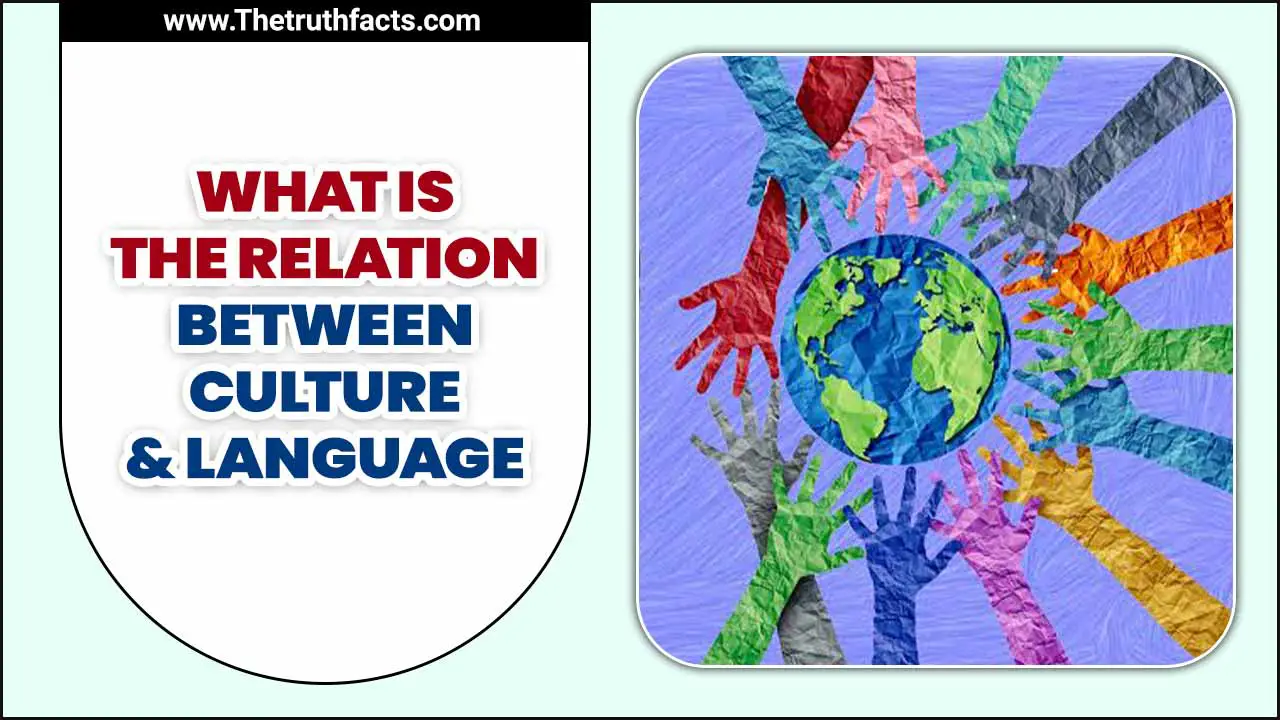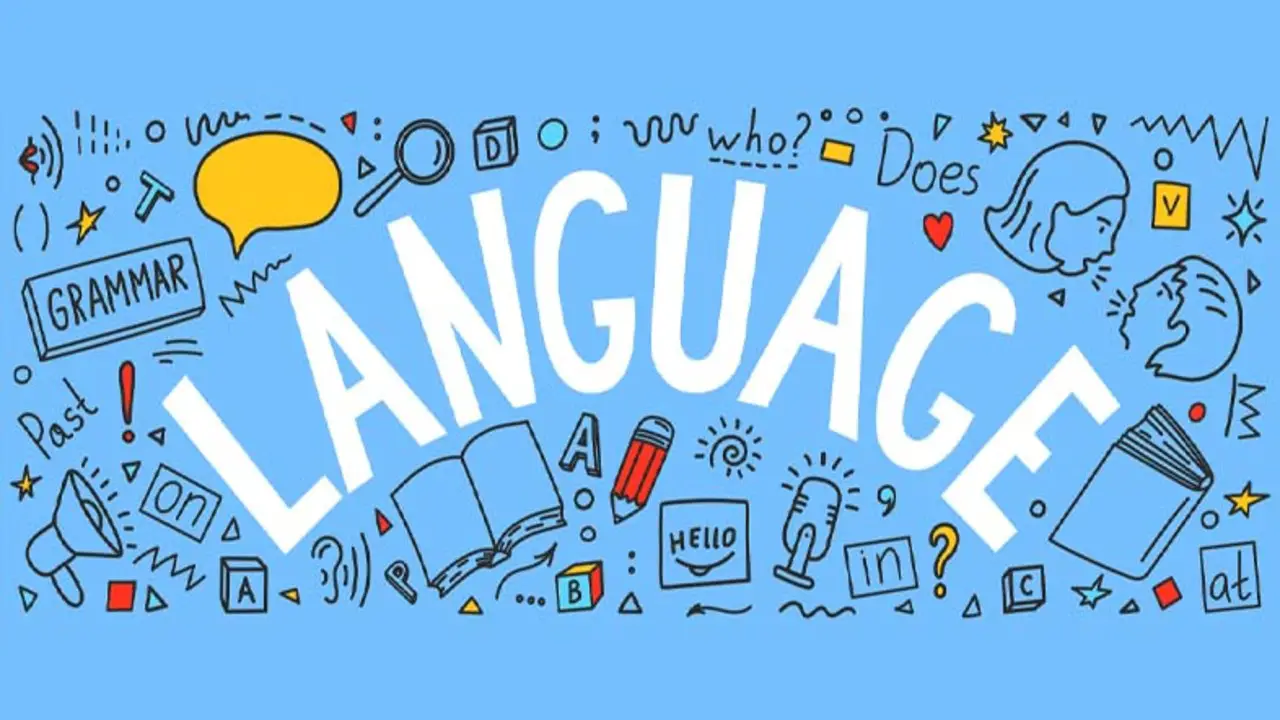Culture and language are two intertwined concepts that profoundly impact our everyday lives. While language is a form of communication, culture encompasses a particular group of people’s beliefs, values, customs, and traditions.
Both culture and language play a pivotal role in shaping our identities, influencing our perceptions and behaviours, and shaping our interactions with others. Whether we realize it or not, our cultural background and the language we speak greatly influence the way we see the world and interact with those around us.
Here, we will delve into the relationship between culture and language and explore how they are interconnected and shape our understanding of the world. We will examine how Body language reflects and shapes cultural norms and values, how cultural context differences affect language use and communication, and how understanding this homologous relationship can lead to better cross-cultural understanding and communication.

What Is Culture?

A culture comprises people with similar beliefs, customs, and values. People often consider these shared aspects of a group’s identity as part of its “heritage.” These aspects of a group’s identity influence how people think, act and feel. In the past, most people viewed culture as passed from one generation to the next through genes or other inherited traits. However, modern research shows that individuals learn and pass on culture from generation to generation through learning experiences and social interactions.
As people interact with others and experience different Western collectivistic cultures, they develop unique perspectives and ideas that become part of their cultural identity. We can see cultures in every country around the world. The diversity of cultures makes the world an interesting and exciting place to live. Thus, it is essential to understand different cultures to appreciate them better and embrace diversity.
What Is Language?

Language is the ability to communicate ideas through symbols. People socialize language to pass it down from one generation to the next. Culture and society shape the use of language. People call the study of language linguistics. Linguists investigate how people worldwide use language to communicate meaning, express ideas, and develop civilizations. They study different types of language, including spoken, signed, and written. Linguists also seek out ways of creating new languages or revitalizing old ones.
They focus on language as a tool for communication, not just a means of conveying meaning or ideas. People can use language for many purposes, from expressing thoughts and feelings to creating and collecting knowledge. The way people use language reflects their cultures, values, and beliefs. By understanding different language uses, linguists help people communicate effectively and evolve as a community.
Describing The Relation Between Culture & Language

Culture and language are two essential aspects of society. Culture influences how words are used, and language controls how culture is transmitted. The relationship between culture & language is complex and dynamic. It can be studied through linguistics and anthropology.
The relationship between culture & language can be cited as one of the critical factors determining a country’s success or failure. A country’s cultural diversity and unique identity contribute to its development. However, this diversity also poses communication, education, and socialization challenges.
1.The Two Are Inseparable
Culture and language are essential elements of human society. They are inseparable because culture is the result of language use. Without language, there would be no means of expressing ideas or beliefs. Culture is how we learn about our world and share our knowledge with others. Language is the tool that allows us to communicate our thoughts and feelings. Culture and language interrelate. They are two essential parts of human society.
2.Language Shapes Culture

Language is a powerful tool that shapes our culture. Different languages have different structures and rules that influence our thinking and behaviour. Other languages use different rules of grammar rules to express the meaning of ‘I’ in sentences like I am going or I am here. Linguistic diversity is one of the critical factors contributing to cultural diversity; language allows people from different cultures to share ideas and communicate.
Language also influences the way we perceive the world around us. Different languages, such as chairs, computers, or smartphones, use different vocabularies to describe objects or concepts. This leads to different ways of categorizing things and may result in differences in how we view the world. In summary, language plays a vital role in shaping our culture through its linguistic diversity and ability to influence how we think and behave.
3.Culture Shapes Language

Culture plays a crucial role in shaping language by dictating the words people use and influencing how people think and behave. Language also influences culture by shaping the way people think and behave. The complex relationship between language and culture is an ongoing debate, with many different perspectives on how language impacts cultures worldwide.
In many cases, language shapes culture, as people adopt and adapt linguistic features from their surrounding language to express different ideas and concepts. On the other hand, cultural influences can shape language over time, leading to unique variations across different groups. Language profoundly impacts all aspects of society, from social norms to political discourse.
4.They Both Shape The Way People Think, Feel And Behave
Culture and language are essential to humans’ thinking, feeling, and behaving. Culture influences how we think about things, while language shapes the language of our expression. Both of these factors have a profound impact on our overall identity and can shape our society and culture in unique ways. Culture plays a crucial role in shaping how we think about things, as it provides us with a set of shared assumptions, values, and beliefs that shape how we perceive and understand the world around us.
On the other hand, language is essential for expressing ourselves verbally and can play an important role in shaping our identity as individuals. By learning more about the role of culture and language in shaping human behaviour and identity, people from all cultures and backgrounds can better understand their cultural values and traditions.
How Does Culture Affect Language?

It’s widely believed that language influences culture, and culture influences language. However, the two are not always linked. Language, indeed, has a profound effect on culture. To understand this, consider the two terms of language – English speakers and Hindi – two different languages, but how people communicate with each other using them is very similar. People shape language based on the culture in which they speak it. Language is influenced by the culture of the people who use it.
There is also a strong correlation between culture and language. This means that a person’s cultural background can also make a difference in their choice of language. How people speak and write in a particular language also affects that language. So, to understand a specific culture, you must first learn its language.
How Does Language Affect Culture?
Language is an essential tool for transmitting culture. It can influence people’s thinking and behaviour by providing a framework of shared values and beliefs. Language creates a barrier between cultures; individuals can use it to promote or suppress specific values and beliefs. Language can also play a significant role in the development of civilization. Different languages may influence how people view gender roles or the importance of education.
The use of language can also help foster cultural diversity and promote better understanding among different groups. This can enhance global communication and bring people from other countries closer together. Overall, the use of language has a tremendous impact on culture, both positive and negative.
How Do Culture And Language Influence Each Other?
The relationship between language and culture is a complex and multi-faceted one. Language shapes how we think, and culture influences how we speak. This means that language affects how people think and behave, while cultural norms influence people’s use of language. This interwoven system of influence constantly changes and evolves as new ideas and values spread through different regions.
The diversity of cultures around the globe has led to a wide variety of languages, each with its unique formal grammar, vocabulary, and phonetics. While some people may find it easy to understand other cultures through their native speaker’s language, others may require particular linguistic expertise for a similar task. The influence of language on cultural practices is evident in everyday life – people often use language to communicate specific ideas or values, whether conscious of it or not.
The Role Of Language In Cultural Diversity And Globalization

The role of language in cultural diversity and globalization is highly significant. Language plays a crucial role in shaping and preserving cultural identities, as it carries a particular community or society’s history, traditions, and values. Different languages give rise to unique worldviews, perspectives, and ways of expressing ideas.
In globalization, language habits act as a bridge connecting people from different linguistic backgrounds. It facilitates communication, understanding, and cooperation among individuals and nations. Through language, people can exchange knowledge, share experiences, and engage in cultural exchanges, promoting diversity and enriching global society.
Conclusion
The complex relationship between culture and language cannot be denied. Language is not only a communication tool but also reflects a particular culture’s beliefs, values, and customs. At the same time, culture shapes and influences the development and evolution of languages.
Understanding and appreciating this link between culture and language is important to foster mutual understanding and respect in our increasingly diverse world. Recognizing the power and significance of language and culture can build stronger connections and bridge cultural gaps.
Frequently Asked Questions
What Is The Relation Between Culture And Language?
Culture and language are closely interlinked, as language habits are an integral part of culture and serve as a means of communication and expression within a particular cultural group.
What Is The Relationship Between Language And Culture In The Last Lesson?
Language and culture are closely intertwined, as foreign culture language education is not only a means of communication but also a reflection of a society’s values, beliefs, and traditions.
What Is The Interconnection Between Culture And Language?
Culture and the history of language are intricately connected, as concepts of language are a key component of culture. Language learning reflects the values, beliefs, and customs of a particular culture and serves as a means of communication and expression within that culture.
What Is The Relationship Between Language And Culture In Translation?
Language and culture are closely interconnected in translation. Human language is a vehicle for expressing cultural learning concepts, values, and norms. Translators must convey the literal meaning of words and ensure that the cultural nuances and context are accurately translated.
Why Is The Relationship Between Language And Culture Important?
The relationship between language skills and culture is important because the English language is a significant component of culture. Language shapes our perceptions, beliefs, and values, and it is through foreign languages that we express and understand cultural manifestation norms, practices, and traditions.

I’m a writer and blogger who loves to talk about entertainment, culture, and relationships. I love to share my thoughts and insights on these topics, and I’m always looking for new ways to engage with my readers. I’m also a big fan of learning new things, so I’m always exploring new areas of interest.
